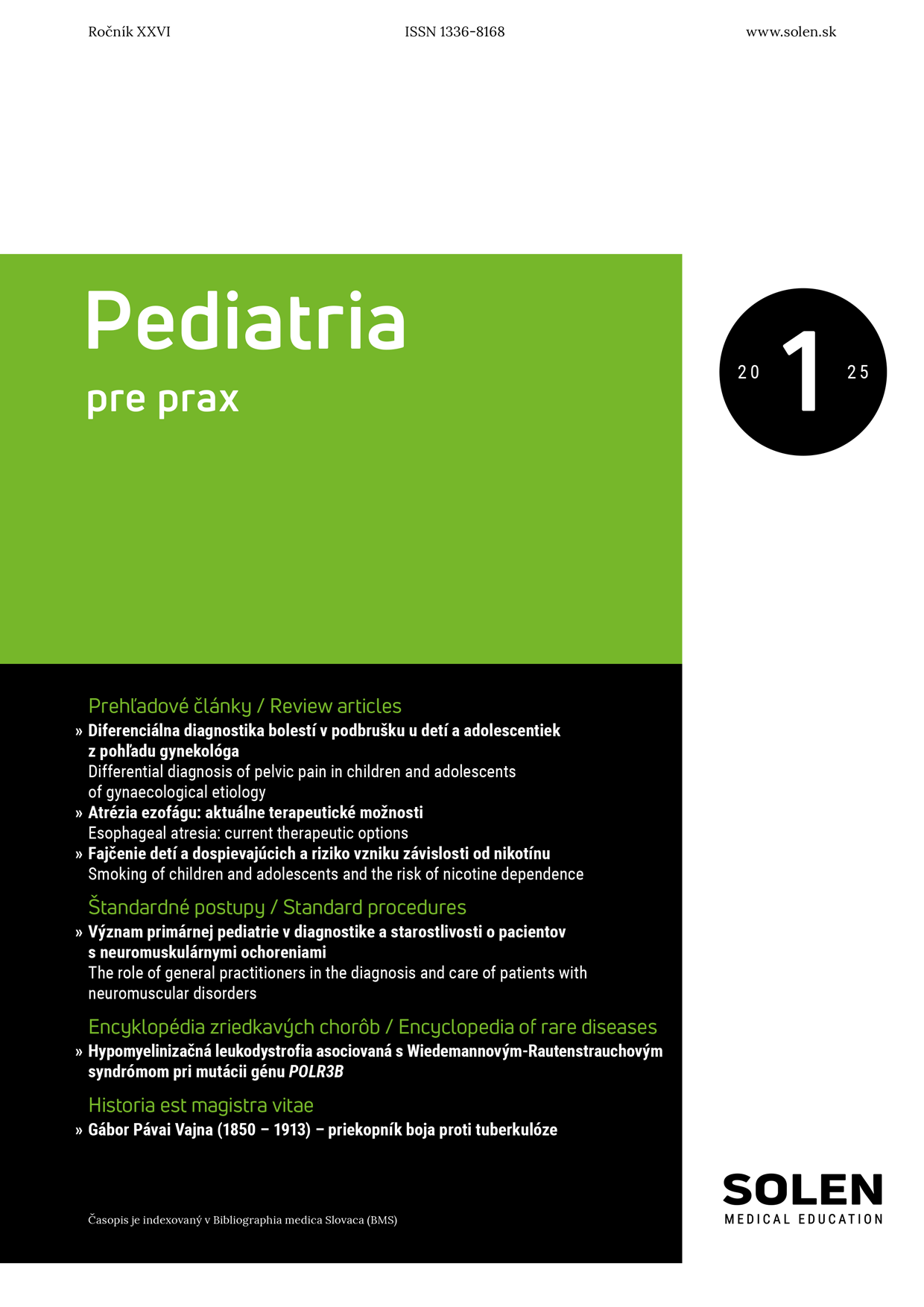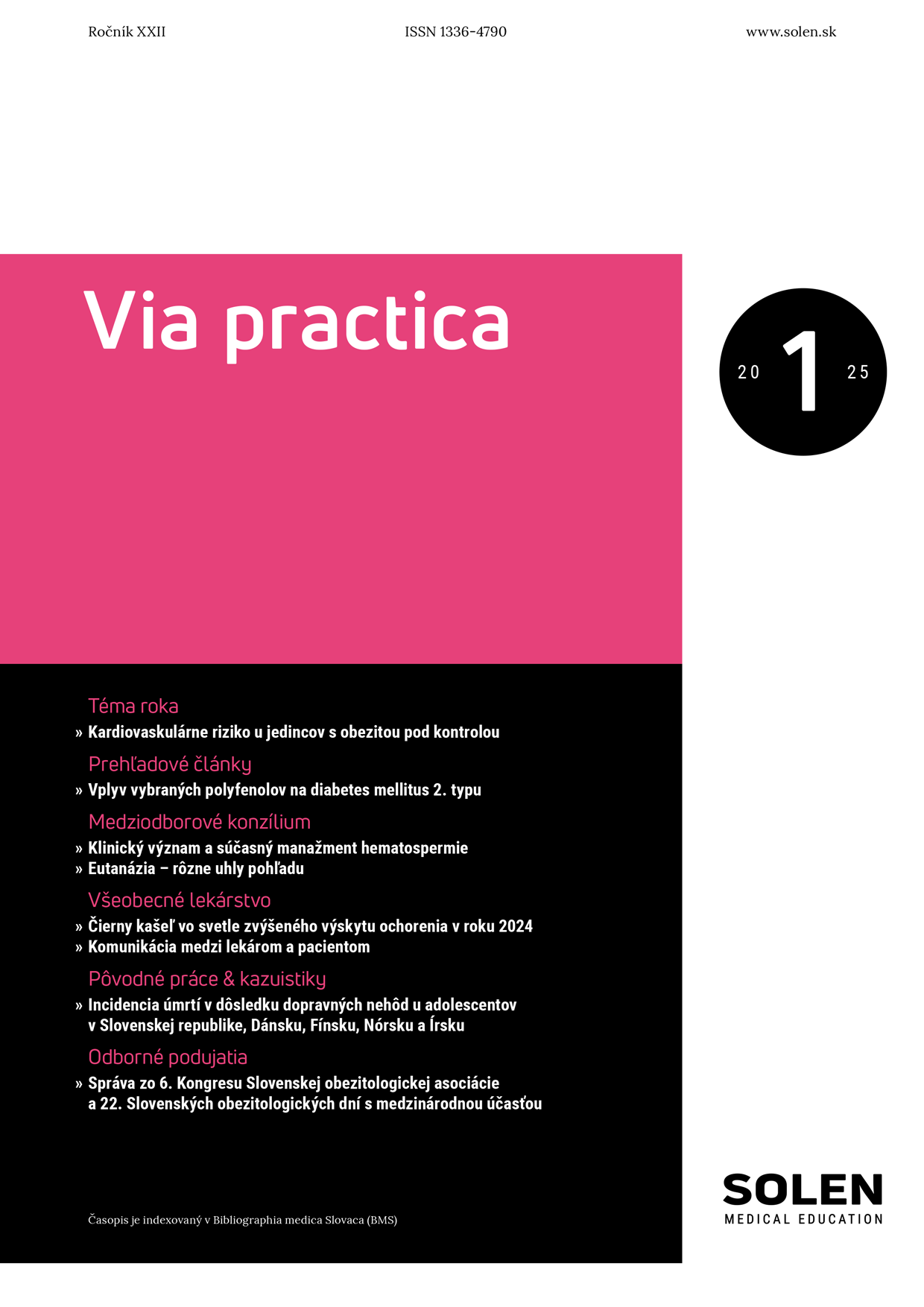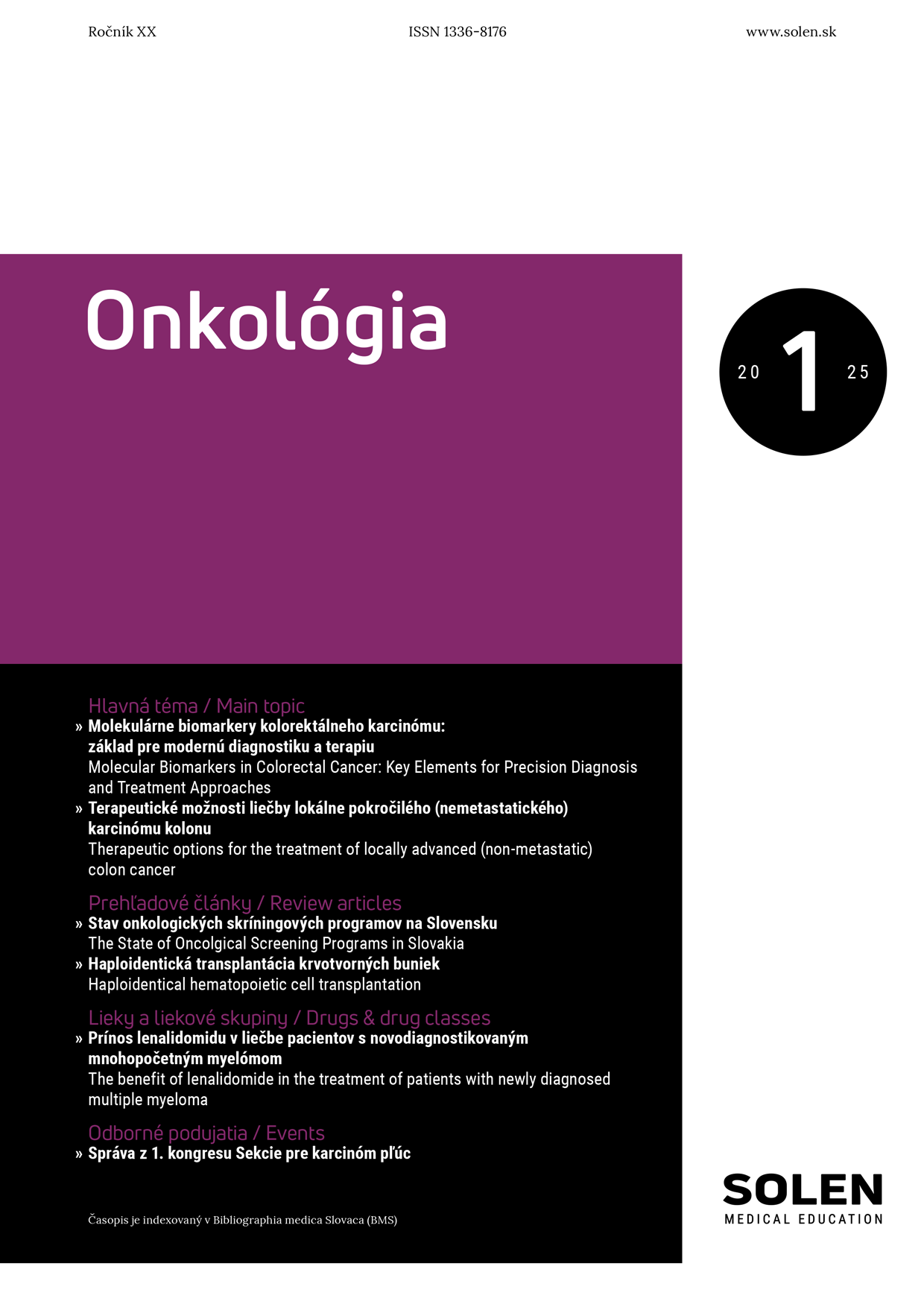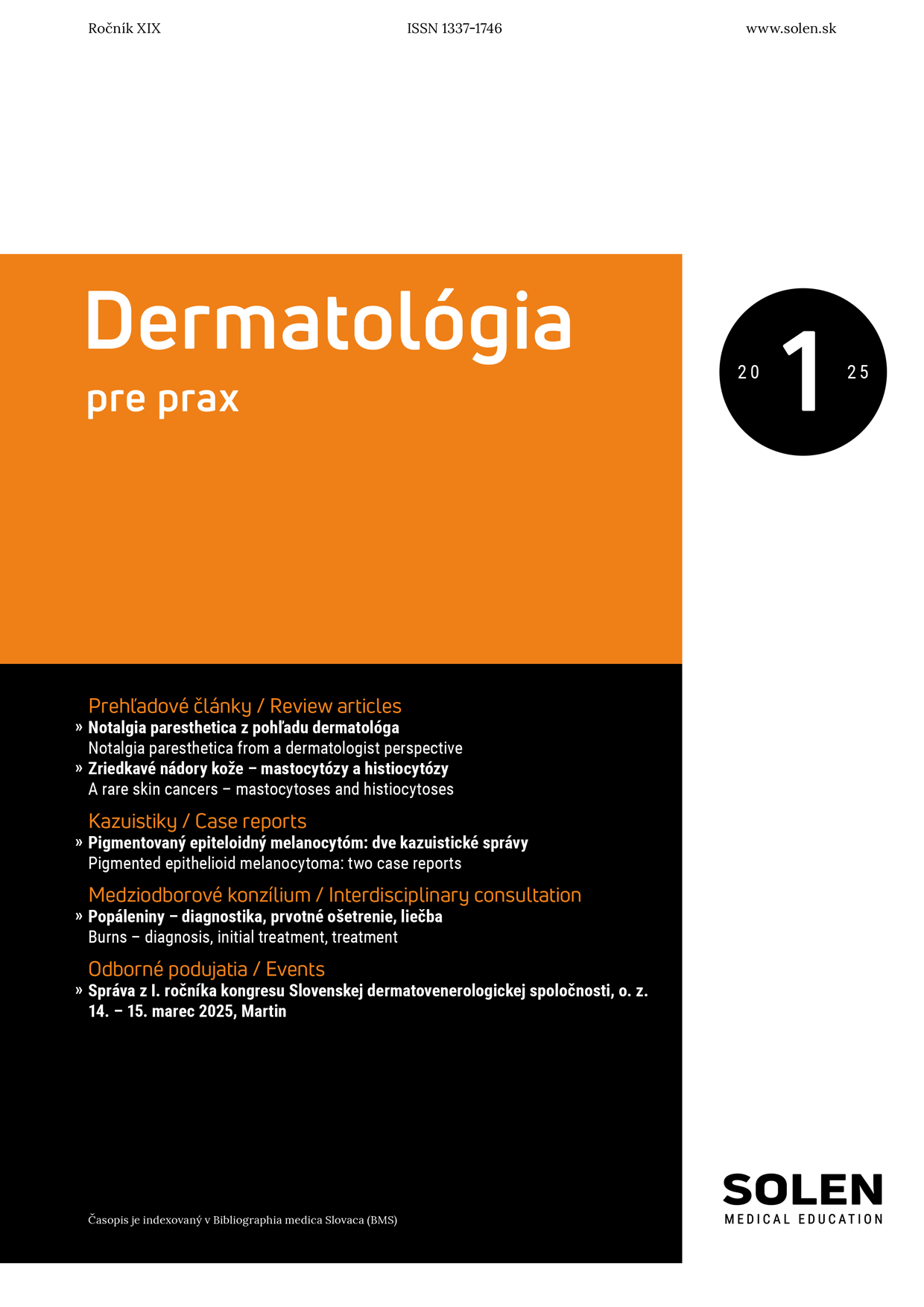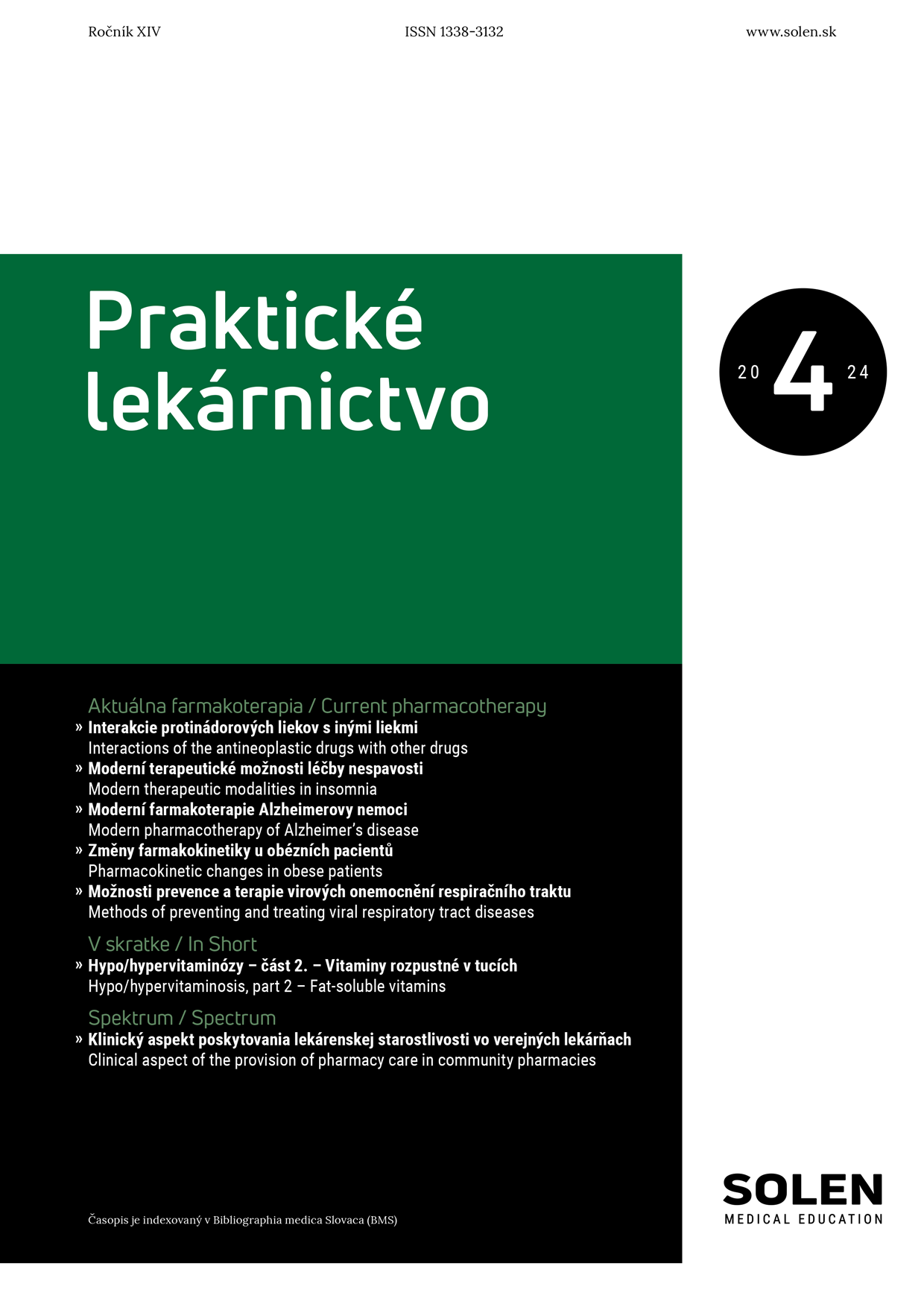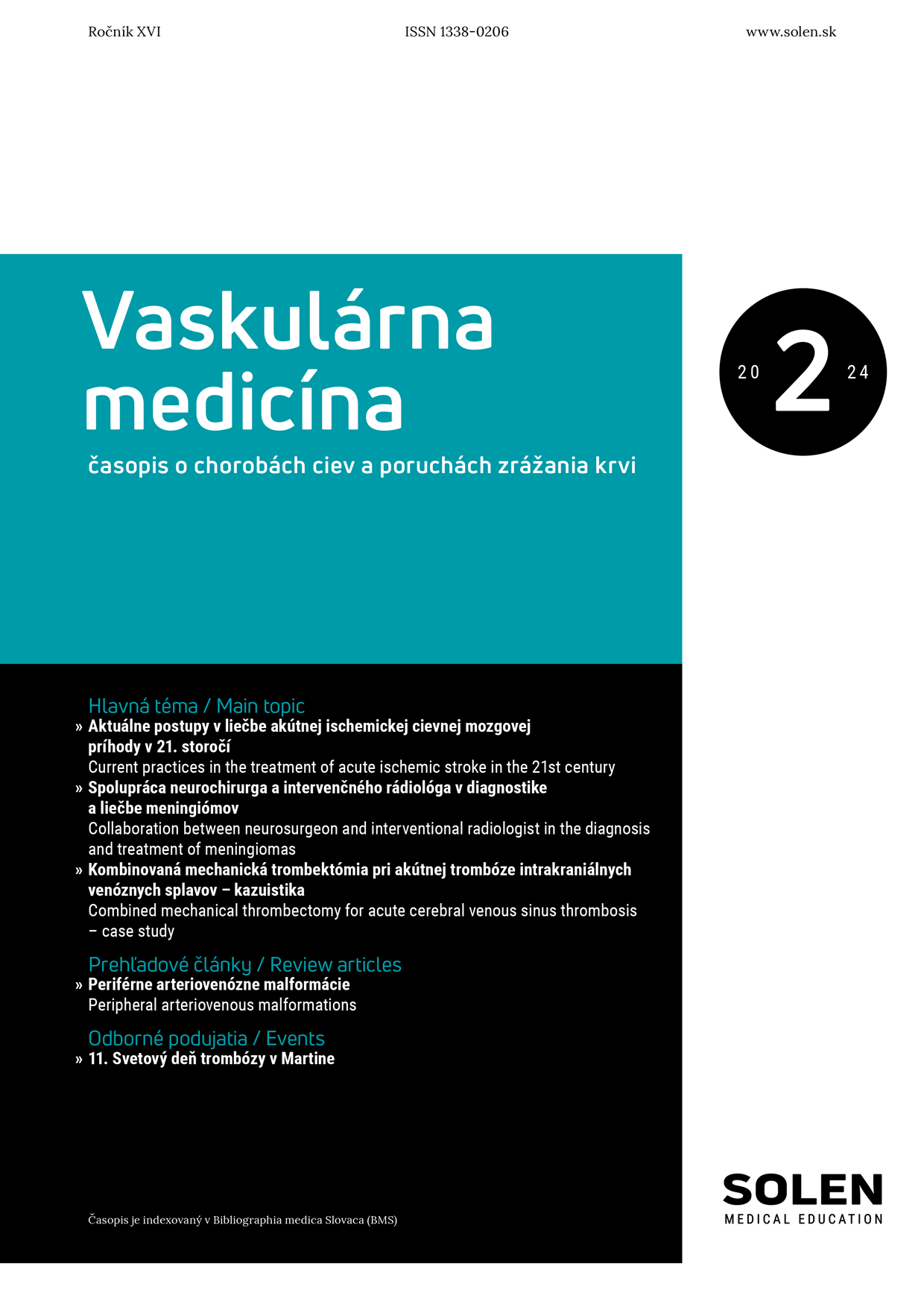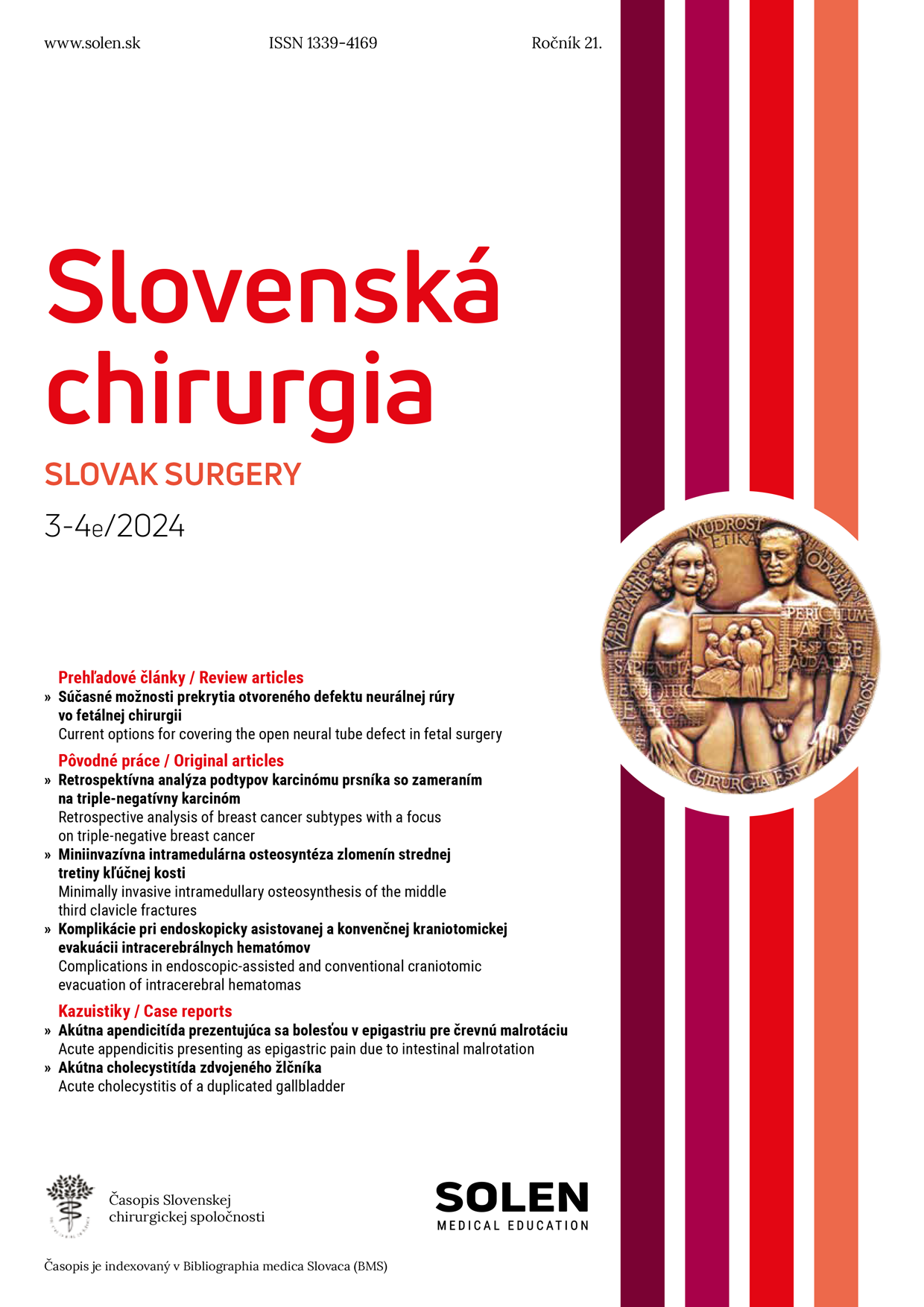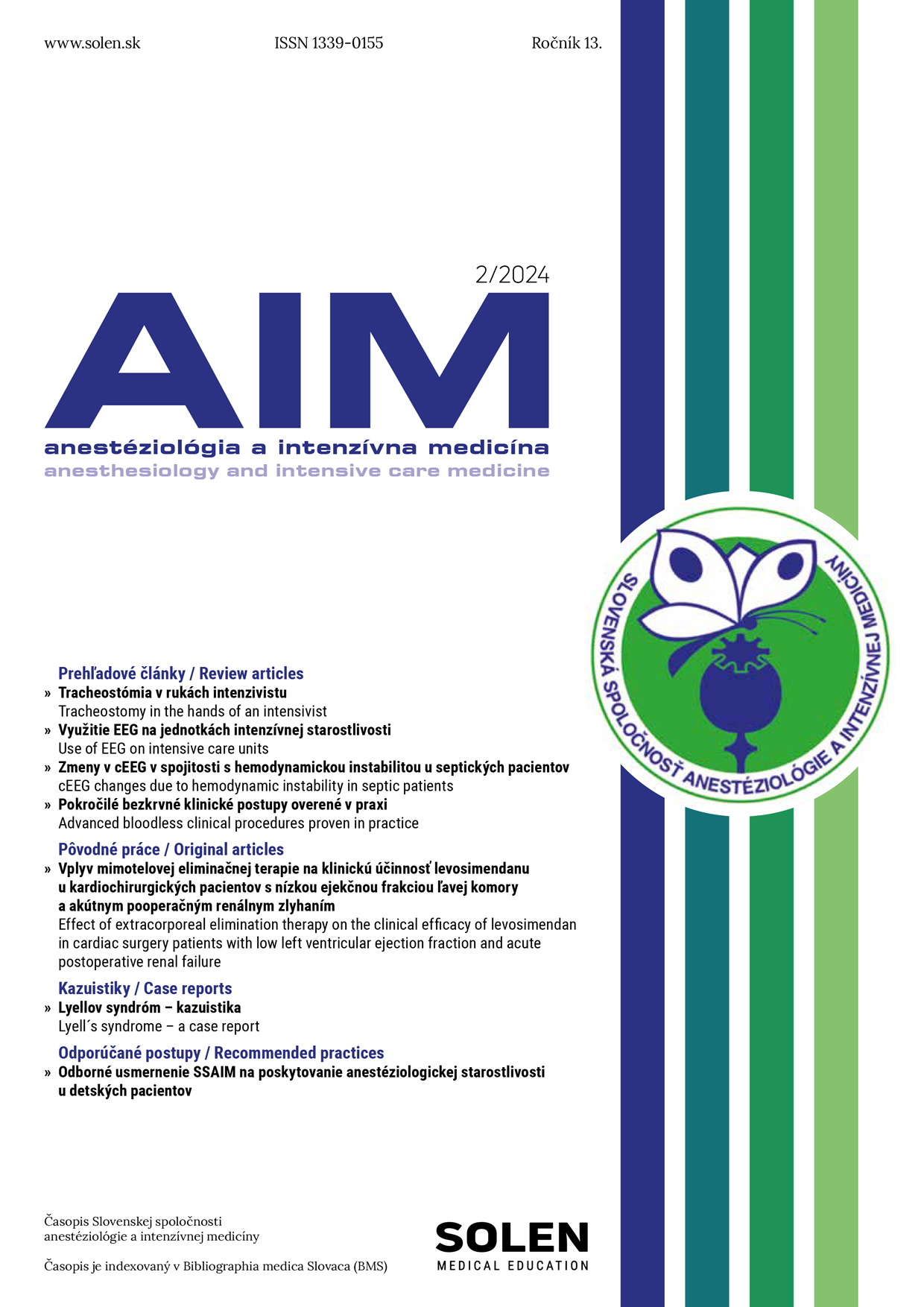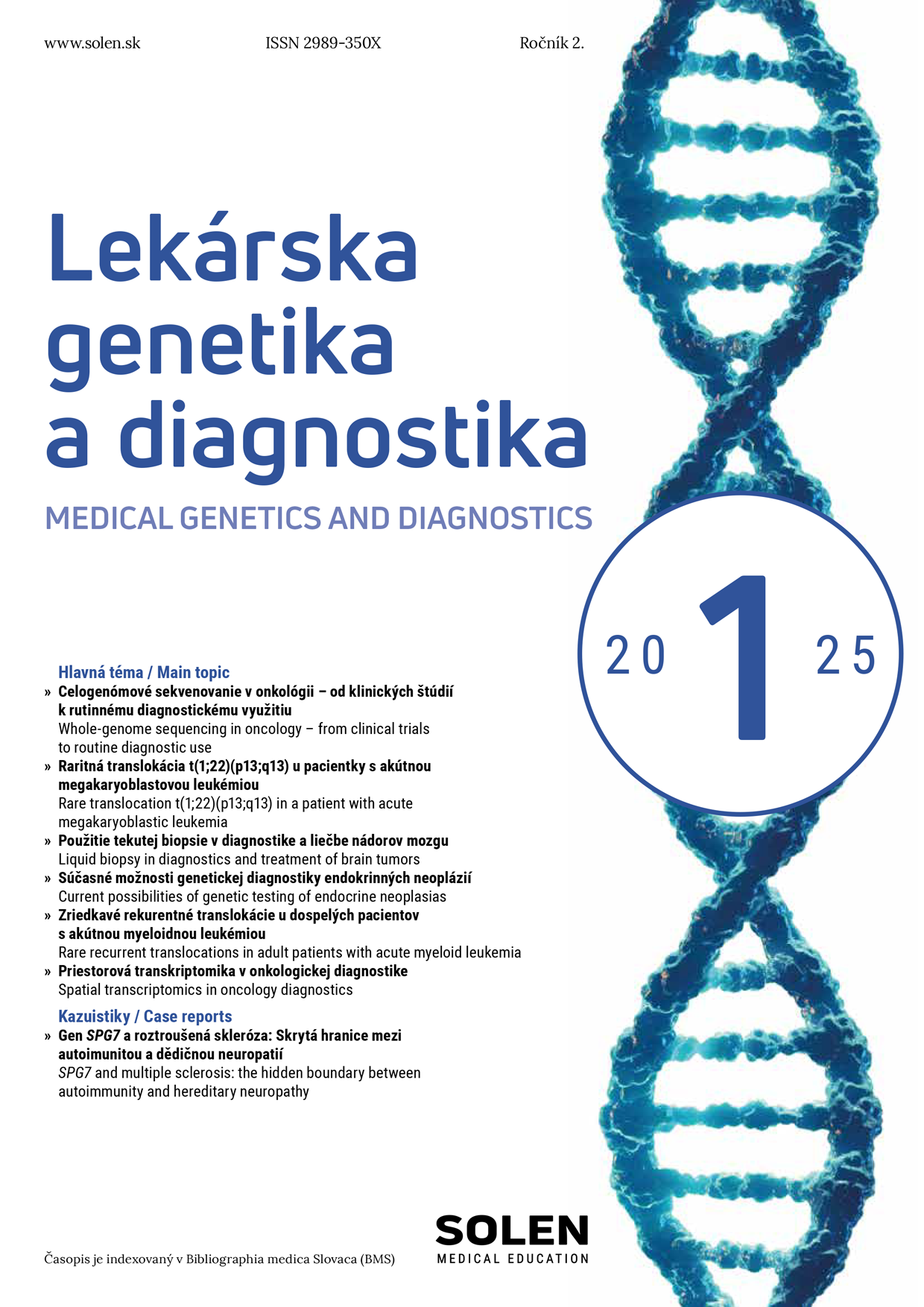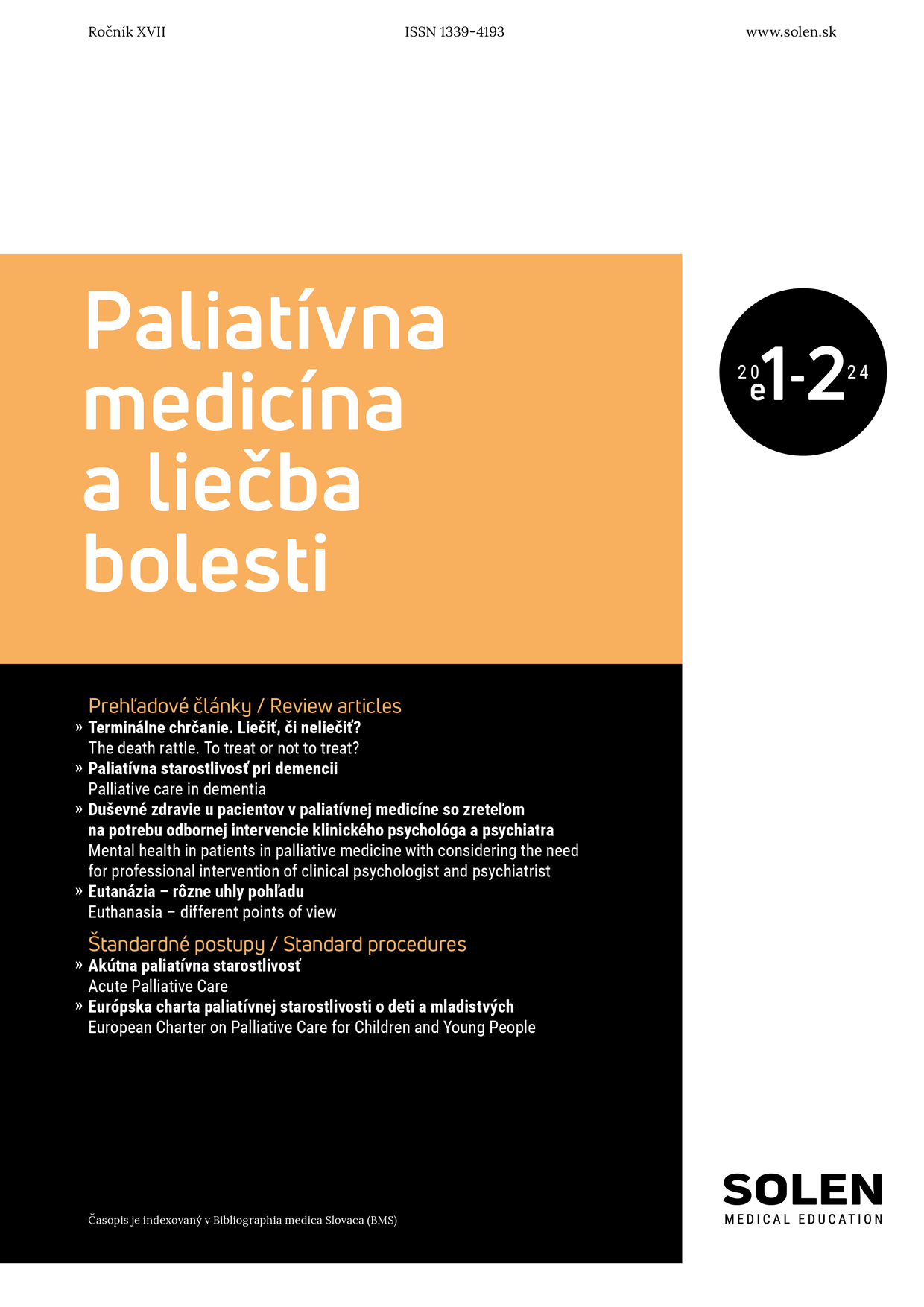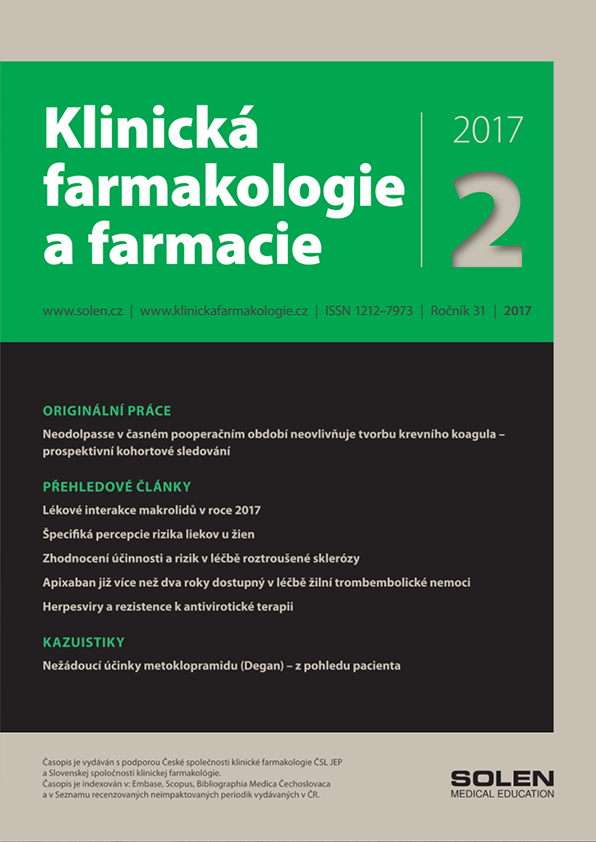Vaskulárna medicína 2/2024
Peripheral arteriovenous malformations
Arteriovenous malformations (AVM) are considered the most dangerous vascular malformations. They are result of vascular development disorder in the early embryonic period and make up approximately 1.5% of all vascular anomalies. Extracranial (peripheral) AVMs are most commonly found in the head, neck, and extremities. They are present at birth and their progression can be stimulated by trauma, inappropriate surgical/endovascular treatment and hormonal changes. Clinical symptoms depend on the location, extent, type and stage of the AVM. AVM treatment should be performed by experts with experience in AVM treatment within a multidisciplinary specialized center. The aim of AVM treatment is to control progression and bleeding. Endovascular treatment is the treatment of first choice, with the main goal being the elimination of the nidus considered to be the source of recurrence. Recurrence of diffuse AVMs after endovascular and surgical treatment is more frequent than the recurrence of most malignancies. Therefore, patients usually require multiple treatment interventions during their lifetime. The complete cure of large and diffuse AVM is often impossible. Due to the discovery of mutations in genes affecting the molecular mechanisms of AVMs, studies are underway with various drugs (trametinib, bevacizumab, pazopanib and thalidomide) for the therapy of complex, extensive, diffuse and recurrent AVMs.
Keywords: arteriovenous malformation, embolisation, classification, treatment


